Hibiscus crown, lip-biting makeup and hand-crossing ceremony … Learn about the popular social trends in the Tang Dynasty
Beijing, July 4 (Yuan Xiuyue) How much women love beauty can be seen from makeup. Air bangs, orange soda makeup, walking in the street, every girl who comes face to face has her own dress. In fact, as early as the Tang Dynasty, powder makeup has become a social trend, and the eyebrows, hairstyles and makeup of women in the Tang Dynasty are even more diverse.
Recently, the costumes, makeup and props in the TV series The Longest Day In Chang’an have caused a heated discussion on the Internet. Hibiscus crown, lip-biting makeup, high bun and fork-handed ceremony. Historically, were people like this in the Tang Dynasty? Besides Jackson Yee and Lei Jiayin, what are the highlights of this drama?
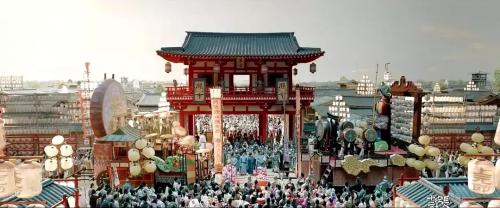
Is Jackson Yee’s hairpin wrong?
In the play, Jackson Yee plays Li Bi, a young genius. The prototype is Li Bi, a veteran of the four dynasties in the Tang Dynasty, who was once an official to a prime minister. He advocated Taoism all his life, so in the play, Li Bi wore Taoist clothes as soon as he appeared, with dust in his hand and a lotus crown on his head. Among them, the wearing method of lotus crown has also caused controversy.
In many costume dramas before, the hairpin of the protagonist was inserted horizontally in the hair crown, but the hairpin on Li Bi’s head was vertical. Some people questioned whether this was wrong.
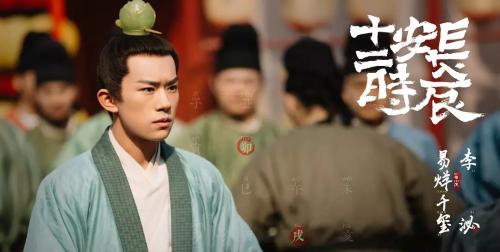
In fact, this way of wearing the hairpin vertically is called meridian hairpin, which is the characteristic of Taoism. In the Tang Dynasty, Taoism had formed a relatively perfect clothing system. Monks’ costumes are divided into seven grades. According to the number of years of entering Taoism and the depth of learning Taoism, the clothes, scarves, boots and shoes of each grade of monks and their colors and textures have different specifications.
The higher the rank, the more complicated and gorgeous the dress is, and those who first enter the door can only wear hats. In the play, Li Bidai has two crowns, the lotus crown on the clear surface and the lotus crown on the jade Qing, which are the crowns that can only be worn by middle and high-ranking Taoist wizards.
Special fork-handed ceremony
Etiquette is very important for costume drama, which is also one of the ways to substitute scenes. Everyone is familiar with bowing, bowing or bowing, but many people are puzzled by the fork-handed courtesy in The Longest Day In Chang’an. What is this operation?
Hand-crossing ceremony, that is, "hold the thumb of the right hand tightly with the left hand, the little finger of the left hand is pointing to the right wrist, the four fingers of the right hand are straight, and the left hand is pointing upwards", is a kind of etiquette that shows special respect.
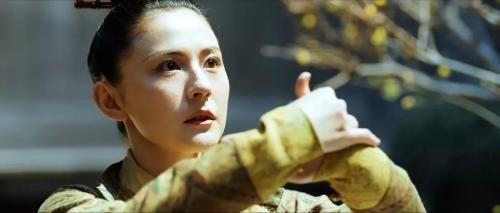
There are many records about the fork-hand ceremony in history, which was seen in the history books many times in the late Han, Wei and Jin Dynasties. In addition to literature records, the hand-crossing ceremony was also found in the murals of Zhao Yigong’s tomb in the late Tang Dynasty, and there were also graphic descriptions of the hand-crossing ceremony in the two paintings of Han Xizai’s Night Banquet and the Female Filial Piety Sutra.
Some scholars believe that in the Tang Dynasty, the fork-handed ceremony was very popular and was well known to all women and children. The fork-hand ceremony was widely popular, probably in the Song and Yuan Dynasties, and it was also the most basic etiquette in people’s lives. In the TV series "Do you know if it should be green, fat, red and thin?", there have also been many times of hand-crossing rituals.
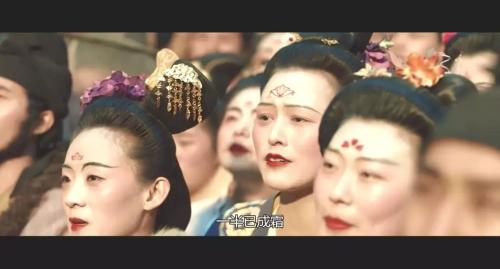
Women in the Tang Dynasty had more makeup.
After the broadcast of The Longest Day In Chang’an, the women’s lip biting makeup in the Tang Dynasty boarded a hot search. In fact, not only lip makeup, but also women in the Tang Dynasty were very particular about face makeup, eyebrow shape and bun.
As early as the Warring States Period, women in China began to powder themselves, and the raw materials were rice flour, lead powder, pearl powder and stone powder. In the Tang Dynasty, the national strength was prosperous, and women’s makeup was also diverse, such as white makeup with lead powder as the main makeup, red makeup with rouge as the main makeup, and peach blossom makeup, flying glow makeup, drunken makeup, crying makeup, tears makeup and so on.
Ancient women also attached great importance to the modification of eyebrow shape, and the material of thrush was "Shi Dai". In the Tang Dynasty, thrush had become a fashion. In the Tang dynasty, there were many styles of eyebrows, including more than ten kinds, such as willow eyebrows, moon eyebrows, broad eyebrows and eight-character eyebrows.

Speaking of women in the Tang Dynasty, many people first think of high bun. Historically, there were many hairstyles for women in the Tang Dynasty, including more than 200 kinds with names. The bun combed on the top of the head is called Gao Ji, which is the most popular one in the prosperous Tang Dynasty.
However, Gao Ji has a very high demand for hair. Don’t women in the Tang Dynasty lose their hair? In fact, women in the Tang Dynasty also had the habit of wearing fake bun, which was called "Yi bun". It is said that Yang Guifei has a hobby of wearing fake bun.
Earrings were not popular in the Tang Dynasty?
Besides makeup and hairstyle, women’s accessories are also very important. In The Longest Day In Chang’an, many women wear gorgeous clothes, but they don’t wear earrings.
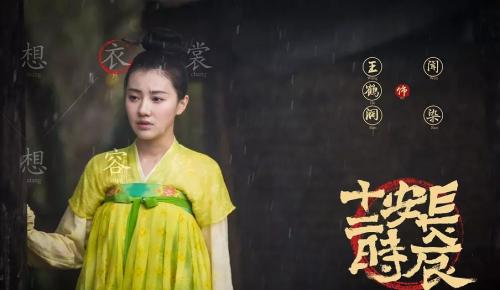
This is not the fault of the crew, but from real history. According to the book "Women’s Adornment in China", earrings appeared only after metallurgical technology came into being, and most of them were made of bronze at first. However, women in the Tang Dynasty did not have pierced ears or earrings. Although some earrings were found in some tombs of the Tang Dynasty, most of them were relics of ethnic minorities.
It was not until the Song Dynasty that the wind of piercing ears began to prevail. Northern minorities generally have the habit of wearing earrings, and even men are popular with ear piercing.

Special fan — — Ouwei
There is also a special artifact in the play — — Blackbird tail, which is a kind of fan with animal hair around the sector. It is generally believed that the bird’s tail is a representative utensil for scholars to talk about metaphysics and Taoism in the Wei and Jin Dynasties. Some people think that it came into being earlier.
The tail of the bird is generally used to distinguish between priority and priority in conversation, and it can also eliminate mosquitoes and flies, relieve summer heat and relieve fever. In addition, it is also a status symbol, and only people with noble status can hold the tail of the bird.
In the Tang dynasty, the tail of the bird was still popular among the literati. In the play, Yan Yuhuang, a Taoist priest, is holding the tail of an owl, and the prototype is Yang Yuhuan. However, with the changes of the times, after the Song Dynasty, the bird’s tail gradually withdrew from people’s lives, but was replaced by fans and dusters. (End)